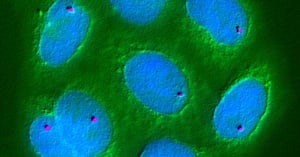In a study examining the spontaneous flight patterns of fruit flies, an international group of researchers discovered linear processes at work, indicating internal sources of variability unrelated to random neurological “noise.” In another study, an analysis of de novo mutation rates in two populations point to a role for non-random mutations in evolution.
The evolutionary advantage of random behavior for survival seems obvious–avoiding predators or undesirable mates, for example. But what is the source of this variability?
“Under carefully controlled experimental circumstances, an animal will behave as it damned well pleases.” Harvard School of Animal Behavior
Captured in the humorous quote above is the contradictory and notorious phenomenon of identical input producing variability in behavioral output.
This known fact is contrary to strict behaviorism, pioneered by B.F. Skinner, which posits a linear progression from environmental input to behavioral output. According to this view, any variability is only apparent and due to our incomplete knowledge of inputs. Another interpretation involves the assumption that variability results from random noise generated by the brain circuits involved in the behavior. In an attempt to clarify the source of this variability, one group of international researchers examined the spontaneous flight patterns of fruit flies.
The intriguing experimental set-up was able to capture the flight patterns of flies in three conditions in which external cues were eliminated, restricted, or uncontrolled. The research team identified distinct and ordered patterns in what appears to be random activity even when there are no external cues. These intriguing findings point to an internally generated source of variability–a neural network designed specifically to generate variable outputs.
When de novo mutations create an advantage
An equally intriguing study by a team from Israel and Ghana developed a new method to examine the rates of the human hemoglobin S mutation (HbS) in European vs African populations. One copy of the HbS gene is protective against malaria, but having two copies causes sickle cell anemia. The traditional interpretation for its prevalence in African populations relies on a random mutation acted upon by prevalence of malaria in this region as the “selection pressure”. For the first time, the investigators examined de novo rates among the two populations. De novo mutations appear for the first time in an individual carrier and are identified when the carrier’s genome is compared to its parents. If this mutation was truly random, de novo mutation rates among Africans and Europeans should be similar. In their newly designed method of analysis, Dr. Adi Livnat and his team discovered a higher de novo rate among Africans, suggesting that de novo mutations–not random ones– better account for the rapid development of this protective adaptation in an African population. Their results led Prof. Livnat and colleagues to conclude:
Mutations may be generated nonrandomly in evolution after all, but not in the way previously conceived. We must study the internal information and how it affects mutation, as it opens the door to evolution being a far bigger process than previously conceived,
To be random or not to be, that is the question. The answer?
It depends.
More biological evolution resources from Purposeful Universe
